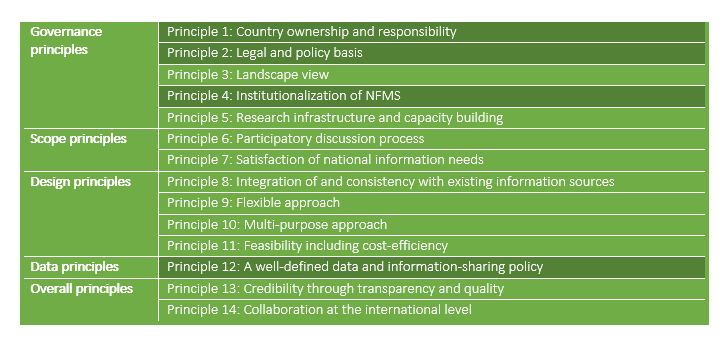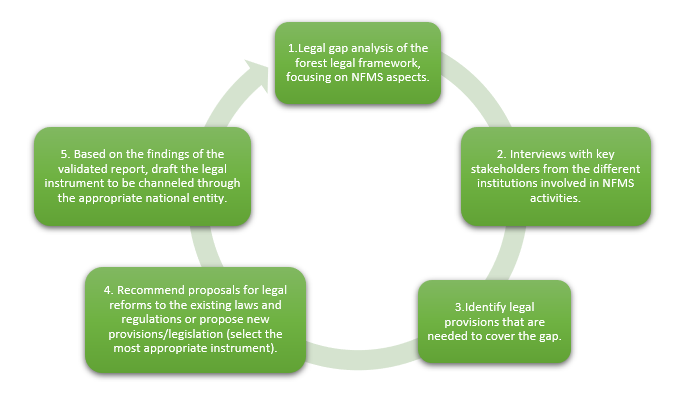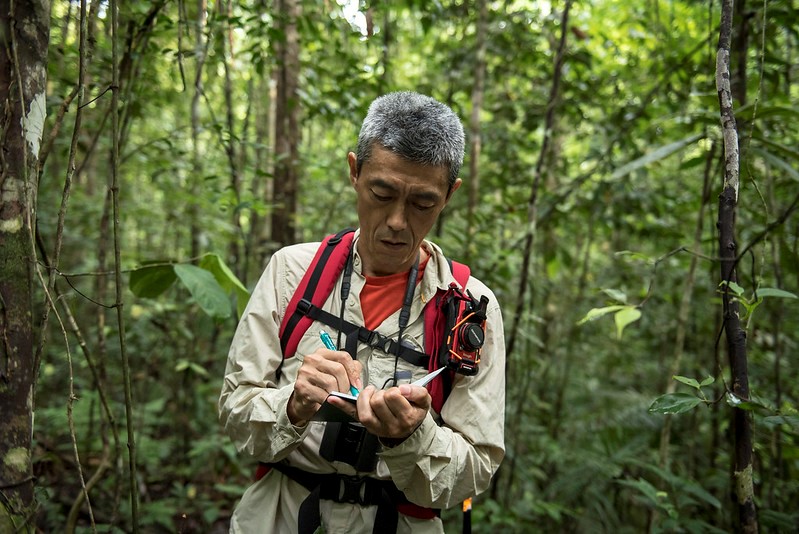Forests play a pivotal role in combating climate change by absorbing and storing carbon from the atmosphere. Together with improved land management, forests and trees could provide up to 30 percent of the greenhouse gas mitigation required by 2030 to keep global warming to well below 2°C” (IPCC 2019). Forests, and forest monitoring in particular, are critical to ensuring that countries stay on target with emission reduction goals within the framework of the Paris Agreement.
For all the countries eager to generate reliable forest data, a sustainable National Forest Monitoring System (NFMS) needs to be put in place. A robust NFMS can support the formulation, monitoring and adjustment of sub- and national forest-related policies, inform citizens and stakeholders and help track progress towards sustainable forest management and reducing emissions related to forest loss.
Launched in 2017, the Voluntary guidelines on national forest monitoring (VGNFM) is a valuable tool that provides principles, elements and best practices for the establishment and implementation of a sustainable multi-purpose NFMS.
Box 1: Principles of the Voluntary Guidelines on National Forest Monitoring

VGNFM’s governance principles, which refer specifically to institutional and legal settings, as well as decision-making processes, highlight the importance of institutionalizing NFMS. If institutionalized, NFMS can lead to an increased country ownership of the system, a key to a more sustainable and comprehensive use of the information generated. Therefore, permanent institutions with clear mandates will facilitate the task to ensure the sustainability of the NFMS and to adequately inform decision-making processes. Integration could be reflected in a multi- sectoral coordination articulating forest, environmental and land use change monitoring systems, requiring interoperability, regulated by law.

Establishing a legal basis for sustainable NFMS
Accessing forest data does not lack its challenges. Lack of trust, cost-related concerns, ambiguous institutional mandates and unclear legal frameworks are often at the root of challenges related to data accessibility. While informal solutions can produce results, they are generally unsustainable.
In response to those challenges, the adoption of legal arrangements can offer part of the solution to help guarantee sustainability, national ownership, financial support and interoperability of NFMS.
Legal solutions could include adding a corresponding paragraph to a national forest law or adopting a legal instrument, such as a decree, that articulates roles and responsibilities of different institutions in relation to the NFMS. Such a decree might also promote the allocation of financial and human resources for NFMS implementation. It could also mandate the creation of a related service or unit needed to carry out various tasks. In order to develop or revise a legal framework to regulate NFMS, one can take the following steps:
Legal steps to regulate a NFMS

Paraguay adopting legal arrangements for NFMS
In Paraguay, partners from across the UN System have collaborated closely to support the country’s national REDD+ process through a range of tailor-made initiatives since 2011. They included the UN-REDD Programme that provided support to Paraguay to submit its first Forest Reference Emission Level of deforestation (FREL). This collaboration also resulted in a new a National Forest Monitoring System for the country, which allows for the reporting of forest carbon -- reliable data on forest area and changes to forest area.
In 2018, Paraguay introduced Law 6256/2018. This regulates the prohibition of transformation and conversion of forest lands in the eastern region. Article 3 specifically requires the Ministry of Environment and Sustainable Development (MADES in its Spanish acronym) and the Forest National Institute (INFONA in its Spanish acronym) to update and regulate the organic structure of the NFMS within 180 days of the entry into force of this law. This law also includes definitions and technical and financial provisions necessary for its functioning. As a result, in 2020, the President of Paraguay adopted Decree n.3246/2020 as subsidiary legislation aiming to regulate the NFMS. The decree (Articles 2 and 8) obliges INFONA to periodically provide official national MRV information related to forest cover area changes (activity data), as well as information on forest carbon stocks and forest species (emissions factors) and obliges MADES to use the information provided by INFONA in the GHG inventory report and other reports, such as FRL/FREL and REDD+ Technical Annex. The decree also contains guiding principles (Article 3), definitions (Article 4) and provisions aimed at guaranteeing financial sustainability (Articles 10 -12) and clearly states the functions and responsibilities of INFONA and MADES.
These important steps will ensure that Paraguay has a sustainable NFMS and is able to respond to the country’s national forest data needs while supporting the Government in achieving the objectives of the Paris Agreement in a timely and transparent manner.
Useful links:
-
Voluntary Guidelines on National Forest Monitoring (also in Spanish, French)
-
FAO’s National Forest Monitoring Systems for REDD+ (also in Spanish)
Related articles:
-
Ensuring the sustainability of National Forest Monitoring System
http://www.fao.org/redd/news/detail/en/c/1148665/
-
Moving towards the transparency framework under the Paris Agreement
-
How a Robust National Forest Monitoring System Can Boost Transparency under the Paris Agreement
-
Gender at the forefront of National Forest Monitoring Systems
https://www.un-redd.org/post/gender-at-the-forefront-of-national-forest-monitoring-systems


